Exercise Basics
Basic Terms
The first thing that should be done before beginning a workout is a warm-up. A warm-up allows your body time to adjust from a resting state to exercise. Because a warm-up can improve the elasticity of your muscles, it can decrease your risk of injury. A warm-up should gradually increase the temperature of your body, heart rate and blood flow, and breathing. It should be intense enough to raise your heart rate, but it should not be so intense that it causes fatigue. A cool-down after a workout allows your body time to adjust from exercise back down to a resting state. It is designed to facilitate muscle relaxation, reduce muscle soreness, and lower heart rate.
Repetitions (reps) are the number of times an exercise is performed. A set is the
number of
times each group of reps is performed. For example, when doing a squat, squatting
down and
then standing back up one time is one rep. Doing 10 squats is one set. When doing
exercises
that only work one side of the body at a time (e.g. lunges), one rep is completed
when the
exercise is done on both sides one time, and one set is completed when the exercise
is done
an equal number of times on both sides. For example, 10 lunges on the right side and
10
lunges on the left side equals 10 total reps and one set. The number of reps and sets
you
perform will vary depending on the exercise, overall fitness level, and overall fitness
goals
(strength vs. endurance).
For fitness to improve, muscles must be challenged to work harder than normal. This
is known as the progressive overload principle. This principle refers to improving
fitness by challenging
the body to work at a level it is not accustomed to. This can be achieved by increasing
the
amount of weight lifted for an exercise, increasing the number of sessions per week,
adding
exercises, reps, or sets to your current routine, and/or resting less time between
sets.
How can you know if you’re using the right amount of weight? If you cannot do at least
eight
reps with proper form with a given weight, then the weight is too heavy, and you need
to use
lighter weights. If you can easily do 12 or more reps with a given weight, then the
weight is too
light, and you need to use heavier weights. Each exercise should be assessed individually
because they work different muscles. Reassess every two weeks.
How Does Exercise Improve Physical Fitness?
As a whole, exercise is designed to improve specific components of physical fitness. Physical fitness has four major areas: muscular fitness, cardiovascular or aerobic endurance, flexibility, and body composition.
Muscular strength is the ability of muscle to exert force, and is essential for everyday activities. These include, but are not limited to, moves that require upper-body strength such as lifting and carry ing objects like groceries, and moves that require lower-body strength like walking up stairs or getting up out of a chair. Muscular strength is improved through strength training exercises such as the biceps curl and squats. To increase strength, do fewer reps, more sets, and lift heavier weights:
Example: Exercises with Weights
- If you are currently doing two sets of 10 reps with three-pound weights, try switching to four sets of six to eight reps (resting 30 seconds to one minute between sets) with as much weight as you can safely lift.
Example: Body Weight Exercise (push-ups, crunches, squats, etc.)
- If you are currently doing two sets of 10 reps, switch to doing four sets of six to eight reps (resting 30 seconds to one minute between sets).
Muscular endurance is how long a muscle can exert force over a period of time. In daily
activities, this is how long you can walk or run before the muscles in your legs get
tired or
rake leaves before the muscles in your arms get tired. During exercise, this is how
many
repetitions you can do before your muscles become too tired to perform the exercise
correctly. To increase endurance, do more reps, fewer sets, and lift lighter weights:
Example: Exercise with Weights
- If you are currently doing two sets of 10 reps with three-pound weights, try switching to one set and do as many reps as you can (maintaining proper form is important) with the three-pound weight before the muscle(s) fatigues. Keep a slow, steady pace for all reps.
Example: Body Weight Exercises (push-ups, crunches, squats, etc.)
- Do as many as you can, maintaining proper form, before the muscle(s) fatigues. Keep a slow, steady pace for all reps.
Cardiovascular or aerobic endurance is the ability of your heart, blood vessels, and
lungs to
deliver oxygen and nutrients to your muscles so that energy can be produced and your
muscles can perform an exercise or a movement. This is important for activities such
as
walking, running, swimming, and bike riding.
Flexibility is your body's ability to move joints through a range of motion (ROM). A certain level of flexibility is needed to:
- prevent injuries
- maintain good posture
- allow for movements of daily activities such as bending and reaching
Body composition refers to how your body is made up in terms of body fat and lean
body
mass. Lean body mass includes vital parts of your body such as your muscles, bones,
organs, skin, etc. Lean body mass can decrease with age, through inactivity, and as
a
result of disease. Body fat has two categories:
- Essential fat is the fat necessary for life maintenance. For men, essential fat is 2-5%.
For women, essential fat is 10-13%. A woman’s essential fat is higher because women have reproductive functions, such as childbearing, requiring extra fat storage. This extra essential fat is located in the breasts and pelvic area. - Storage fat is the percentage of fat your body has over essential. This is the fat that
leads to a person being overweight or obese and is a risk factor for many preventable diseases such as hypertension, type 2 diabetes, and heart disease.
Using the FITT Principle to Improve Physical Fitness
The American College of Sports Medicine (ACSM) recommends using the FITT Principle to safely apply the principle of progressive overload. FITT stands for frequency, intensity, time, and type.
Frequency refers to how often a person exercises. After any type of exercise the body goes through a repair and rebuilding process. Exercise often enough to stress the body so it will adapt to your exercise regimen. Also, be sure to allow time for muscle repair between sessions.
Intensity refers to how hard a person exercises or the level of effort exerted. When
talking
about exercise intensity, the terms “moderate” and “vigorous” are often used. When
performing at a moderate intensity, you are working hard enough to raise your heart
rate and break a sweat. You should still be able to talk with someone, but not sing
the words to your favorite song. With vigorous-intensity exercise, you are breathing
hard and fast, and your heart rate is elevated. When working at this level, you will
not be able to say more than a few words without pausing for a breath.
Examples of Moderate- and Vigorous-Intensity Exercises
| Moderate-Intensity | Vigorous-Intensity |
|
|
Heart rate monitoring is the primary way to measure intensity during aerobic activity.
Before
starting to exercise, determine your target heart rate (THR). First, figure your maximum
heart
rate (MHR) by subtracting your age from 220. For beginners, the THR is 50-70 percent
of your
MHR. For more advanced exercisers, the THR is 70-85 percent of MHR. For example, the
MHR for a 40-year-old person is 180. Beginners would exercise at a THR of 90 – 126
beats
per minute (bpm). Beats per minute is the number of times the heart beats in one minute.
Advanced exercisers would exercise at a THR of 126bpm – 153bpm.
Another way to measure intensity is by using the org Rating of Perceived Exertion Scale (RPE). the intensity levels range from 6 to 20 and roughly correlate to heart rate when multiplied by 10.
| RPE | Exertion | RPE | Exertion |
| 6 | No exertion at all | 14 | |
| 7 | Extremely light | 15 | Hard (heavy) |
| 8 | 16 | ||
| 9 | Very light | 17 | Very Hard |
| 10 | 18 | ||
| 11 | Light | 19 | Extremely hard |
| 12 | 20 | Maximal exertion | |
| 13 | Somewhat hard |
While exercising, rate your perception of your total feelings of exertion, combining all sensations and feelings of physical stress, then choose the number on the RPE that best describes your level of exertion.
Intensity during muscle-strengthening activity has three parts:
1. the amount of weight lifted
2. the number of repetitions performed
3. the length of time it takes to complete one set of exercises
To increase your intensity, change only one of the three components at a time.
Time is the how long you exercise. The type of exercise performed determines the length of the exercise session. To improve health, exercise should be at least 10 minutes in duration.
Type is the specific kind of exercise performed. There are four types of exercise: cardiovascular/aerobic endurance, strength training, stretching, and balance. While there is some overlap with the benefits of the different types of exercise, it is important to perform each type of exercise because of their more specific benefits.
1. Aerobic activity increases your breathing and heart rate. Examples of aerobic activity
include walking, jogging, swimming, and riding a bike. Benefits of aerobic activity
include:
- lower risk of cardiovascular disease including lower rates of heart disease and
stroke, lower blood pressure, and improved blood lipid profiles - help to manage or prevent diabetes
- weight management
- improved stamina for daily activities
- decreased anxiety and depression
2. Muscle-strengthening activity targets specific muscle groups to increase muscular strength and endurance. Muscle-strengthening
activity includes the biceps curl, squat, and overhead press. Other benefits of muscle-strengthening
activity include:
- increased bone density
- reduced risk for chronic diseases such as diabetes, heart disease, osteoporosis, and arthritis
- improved sleep
- reduced depression and improved sense of well-being
- weight management
3. Flexibility activity is a form of exercise in which a specific skeletal muscle or muscle group is deliberately elongated to its fullest length. Benefits of flexibility activity includes:
- improved muscle elasticity and flexibility
- increased range of motion
- improved circulation
- reduced risk of injury (when performed any time after a sufficient warm-up)
- reduced stress
- reduced muscle soreness
4. Balance is a state of bodily equilibrium. Whether or not you have good balance
depends on your ability to maintain or regain your body’s stability. Some balance
exercises build up the strength in your leg muscles, while others focus on stability.
Benefits of balance activity includes:
- improved stability
- fall prevention
- improved ability to perform everyday activities such as a walking and bending over to tie shoelaces
Not everyone progresses at the same rate. Use the FITT principle chart to help determine an exercise routine that is suitable for you and your needs.
FITT Principle Chart (part 1)
| Variables | ||||
| Fitness and/or health benefit |
F |
I |
T |
T |
| Cardiovascular endurance | 5 or more days a week for moderate; 3 days a week for vigorous | Moderate to vigorous intensity (60%-85% of MHR) | 30 - 60 minutes of moderate intensity; 20 - 60 minutes of vigorous intensity | Continuous motion of a large muscle group- such as running, biking, swimming |
| Muscular strength | Alternate days 2-3 times a week | High resistance (close to maximum capability) | 2 to 4 sets of 8 to 12 repetitions |
Free weights |
| Muscular endurance | Alternate days 2 - 3 times a week | Low to moderate resistance | 2 to 4 sets of 15 to 20 repetitions |
Free weights |
| Flexibility | Daily (minimum of 2-3 days a week) | Slow and controlled movements | Hold poses for 10 to 30 seconds |
Static (no movement) |
| Activities of daily living | Daily | Low to moderate intensity | 30 to 60 minutes |
Gardening Walking Housework |
Muscle Soreness
To build strength when you exercise, you must work hard enough to break the muscle down so it can repair itself and adapt. This often causes soreness, especially when you do something your body is not used to.
Acute muscle soreness is the soreness felt during or immediately following exercise.
Your
body is constantly burning energy by breaking down glucose, but it also produces some
byproducts. Generally, you don’t feel sore from normal day to day activities because
your body
can use or dispose of the by-products before they build up. When you exercise, you
produce
these by-products at a rate too fast for your body to deal with. That build up can
cause muscle
soreness during your work out.
Edema, or swelling, occurs during exercise because of the shift of fluid from the
blood to the
muscle tissues when the muscles fibers (muscle cells) begin to break down. This swelling
can
also cause acute muscle soreness.
Delayed-Onset Muscle Soreness (DOMS) is soreness felt a day or two after exercise.
Causes
are not fully understood, but DOMS is thought to be caused by the damage done to the
muscle
when exercising or an immune system response to inflammation. DOMS is your body’s way to force you to take time to recover. It inhibits your ability
to perform at your best, and it almost completely halts glycogen re-synthesis (which
is where our energy comes from) so muscle tissue can be repaired. This soreness should
only last a day or two. Muscle soreness is not a bad thing; in fact, it is an easy
way to tell you are making progress. If you never feel sore then you are not breaking
the muscle down enough to experience any significant strength gain. Do not let the
fear of soreness keep you from working out.
Recovery is an important part of the strength training process of strength training.
If you have a
really good workout one day and are sore the next day, it is ok to take the day off
to recover or
do a lighter workout (like going for a walk). The muscles need time to repair themselves
in
order for strength to increase. But when the soreness goes away, get right back into
your
regular routine. If you don’t, you will lose the progress you have made. Muscle atrophy
(loss of
muscle tissue) can begin to happen in as little as 72 hours.
Exercise Safety: Injury Prevention and Joint Protection
Joints
Joints can become sore or injured when they endure undue stress. Proper form or technique during exercise can help to reduce this risk. Two joints that can be prone to injury because of incorrect form or technique are the should joint and the knee joint.
The shoulder joint is the most mobile joint in the human body and is comprised
of four muscles called the rotator cuff (see Figure 1). Injury to the shoulder joint
can occur
when the arms are raised higher than shoulder height while bearing excessive weight.
This
may cause the muscles to become pinched or trapped leading to compression, inflammation,
and possible damage.
Figure 1: Should Joint and Rotator Cuff Muscles
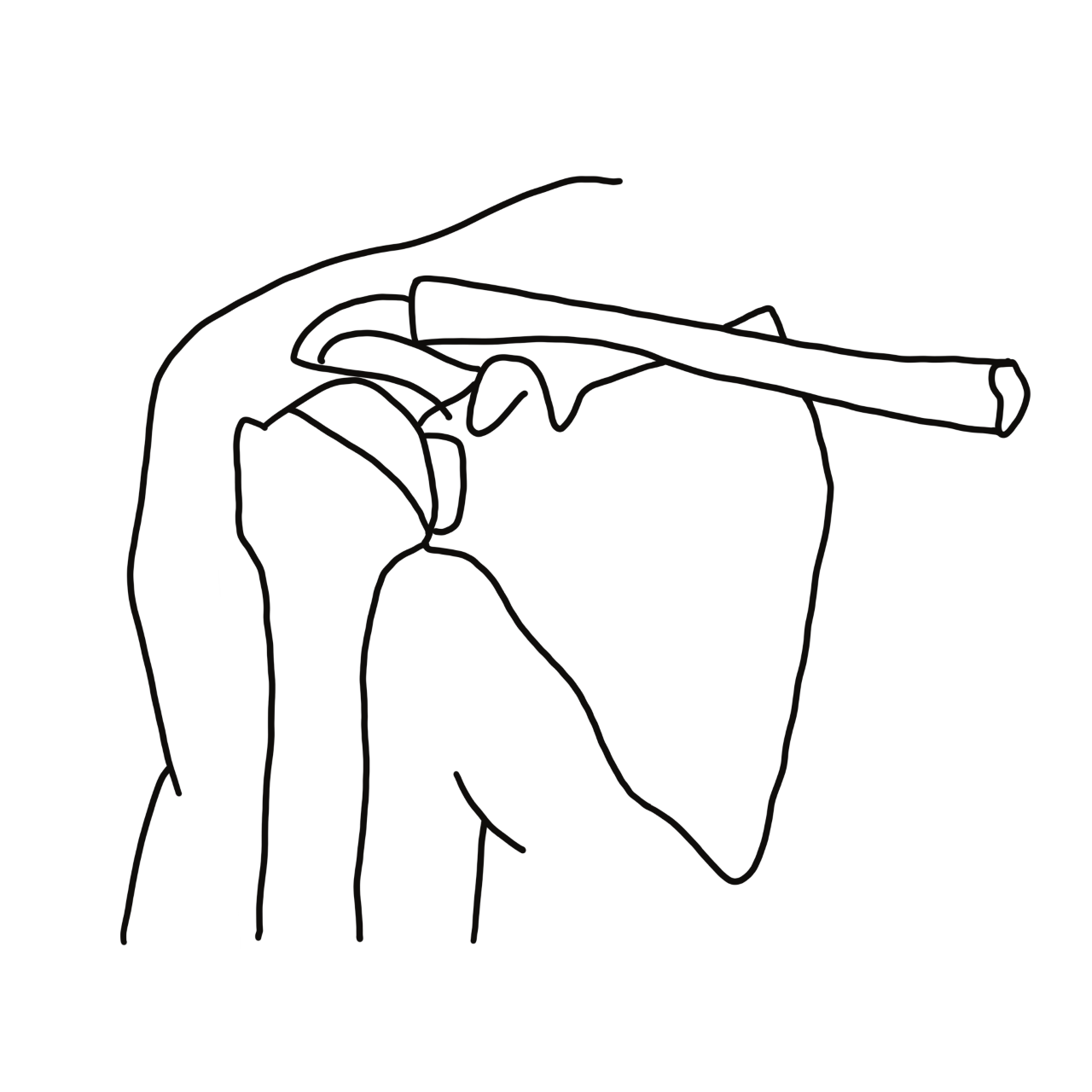 |
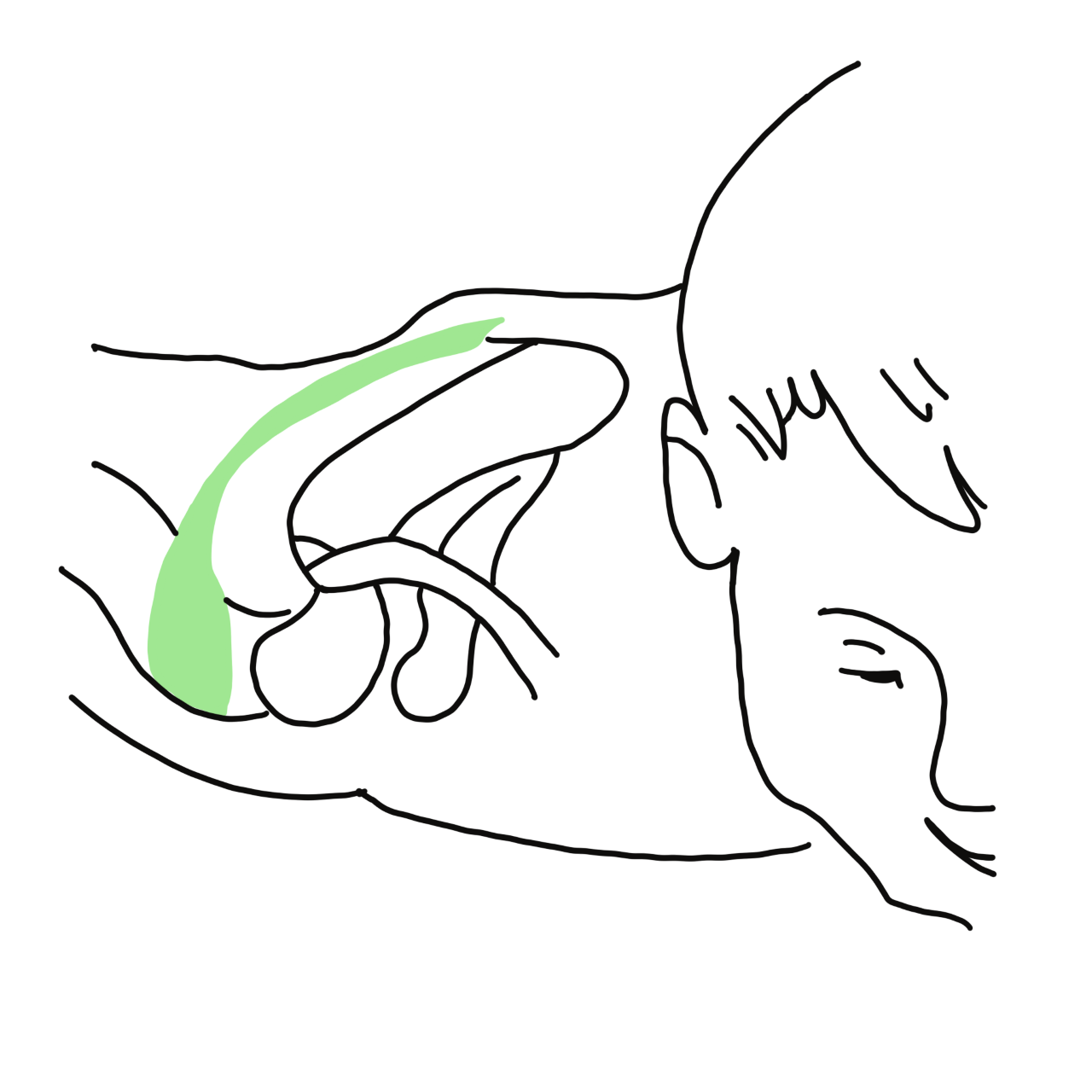 |
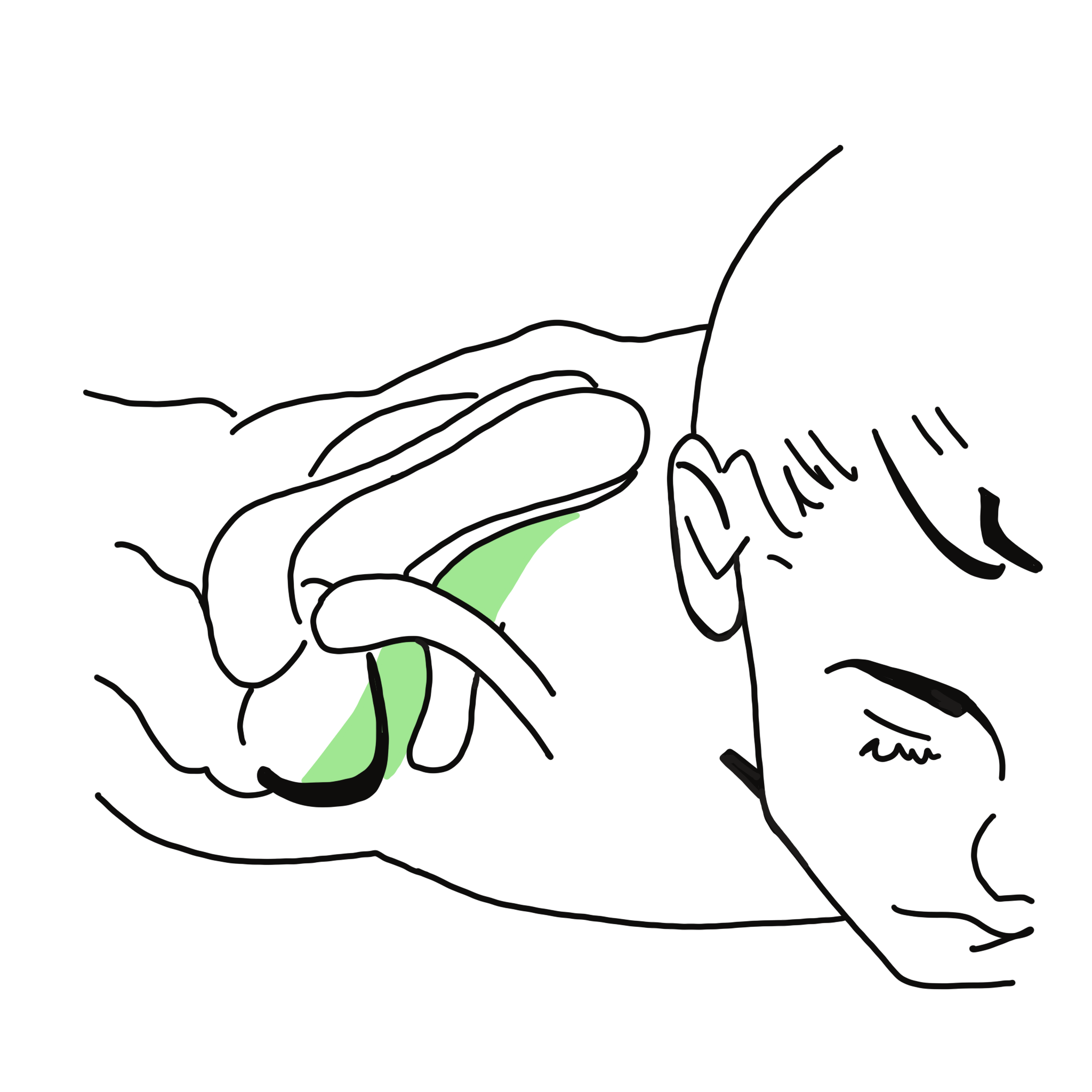 |
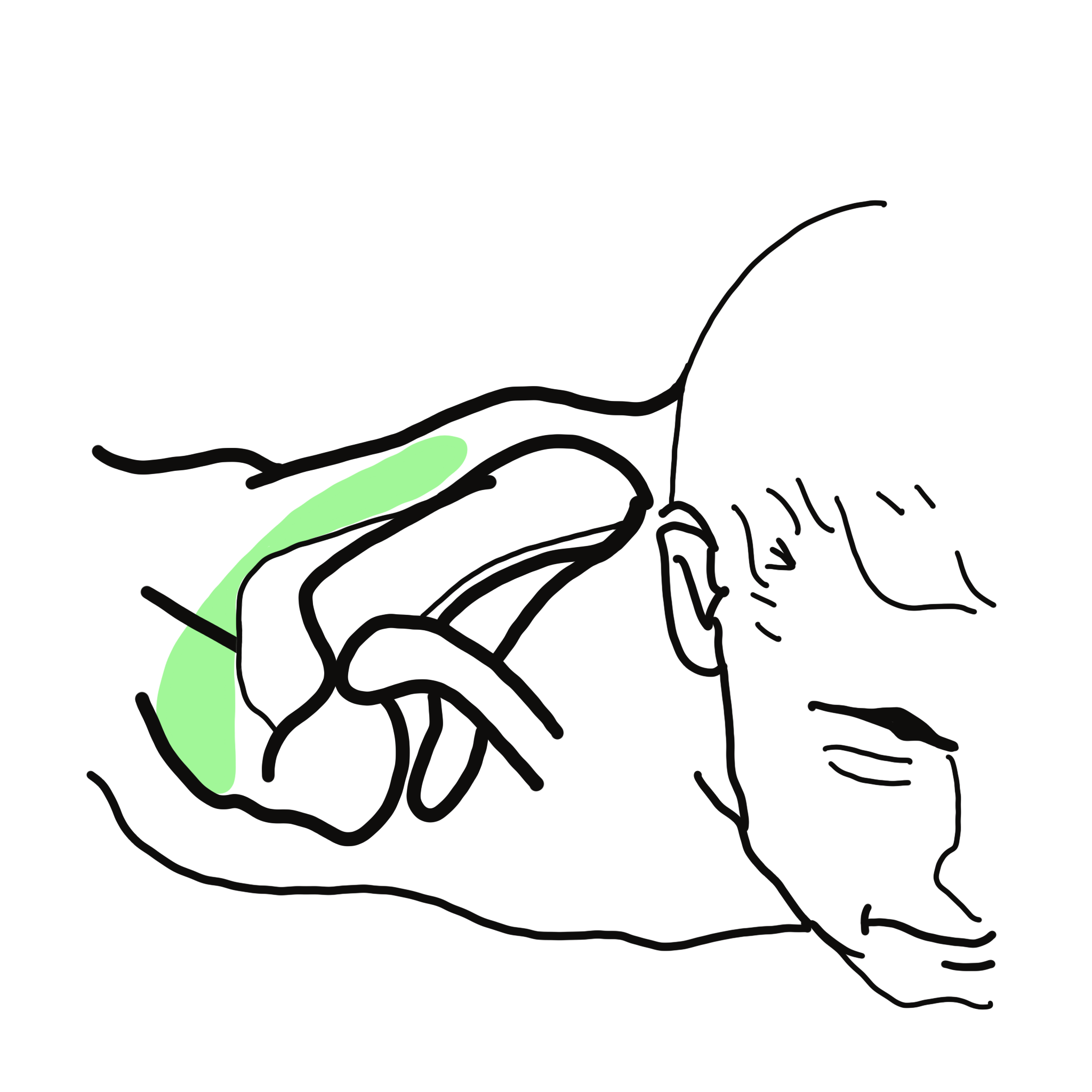 |
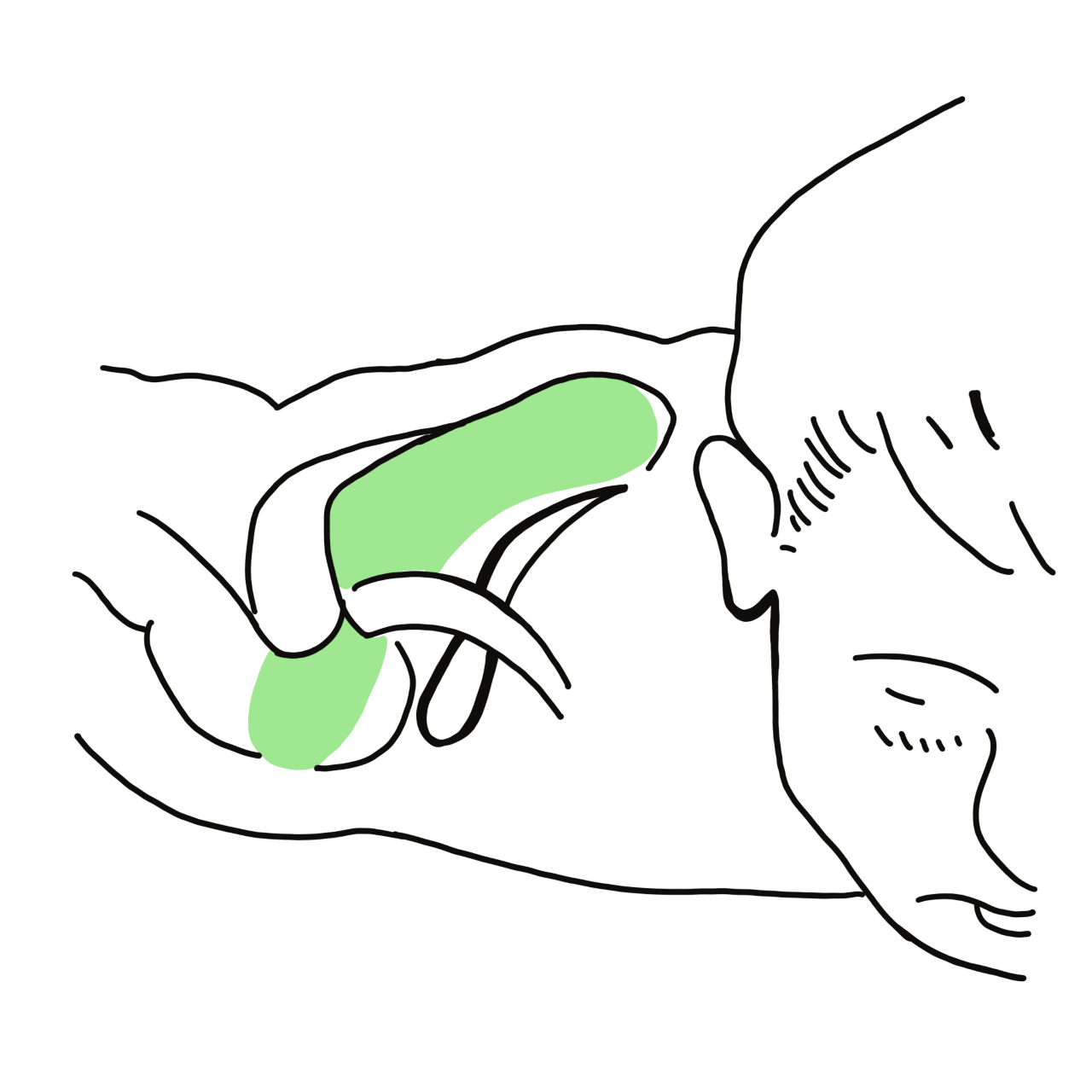 |
| Shoulder Joint | Infraspinatus | Subscapularis | Teres minor | Supraspinatus |
The front and side raise use the shoulder joint. Both exercises are often performed incorrectly. Take care to lift the arms no higher than shoulder level to avoid the pinching or trapping of the rotator cuff muscles. See Figure 2 for correct form.
Figure 2: Correct Form for Front and Side Raise
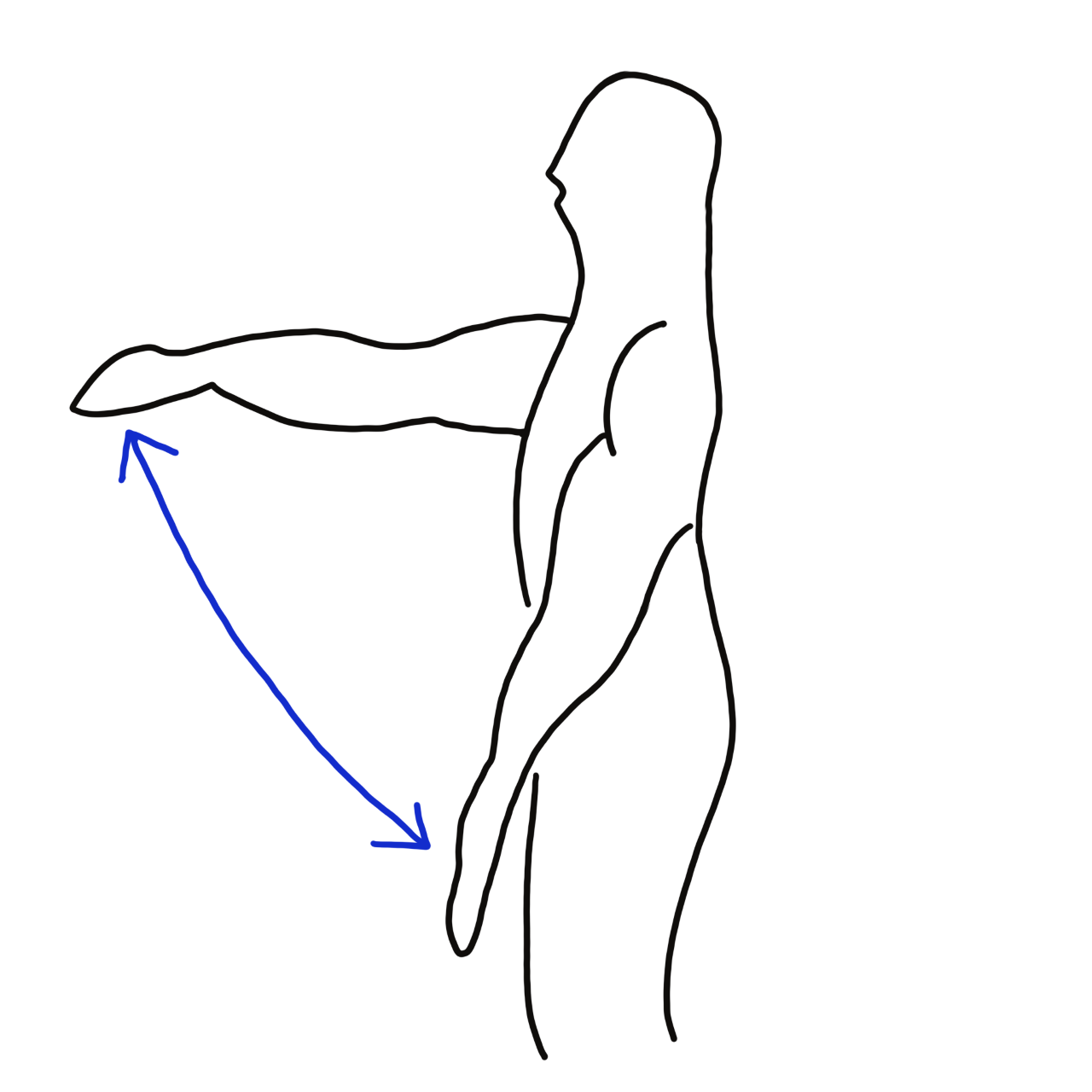 |
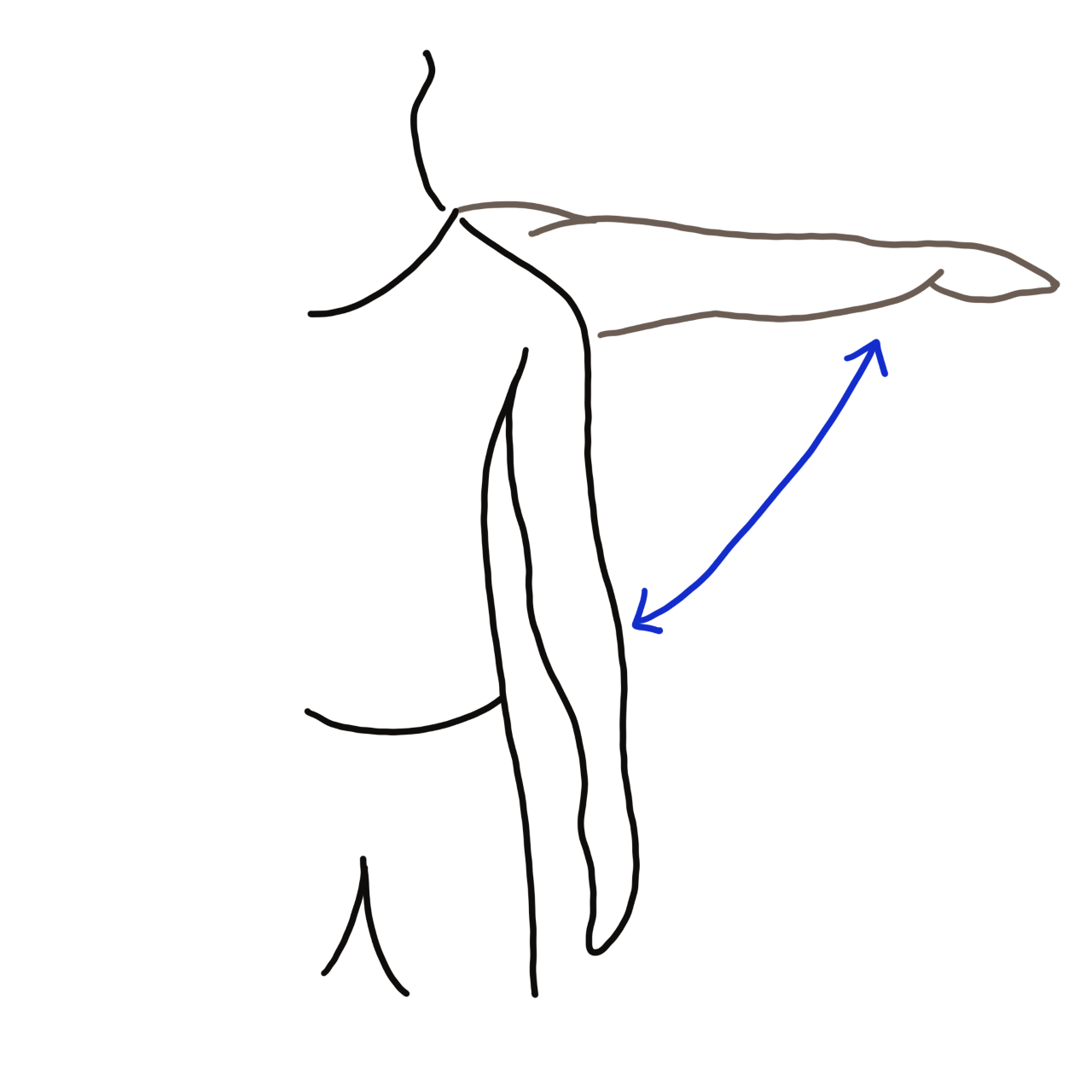 |
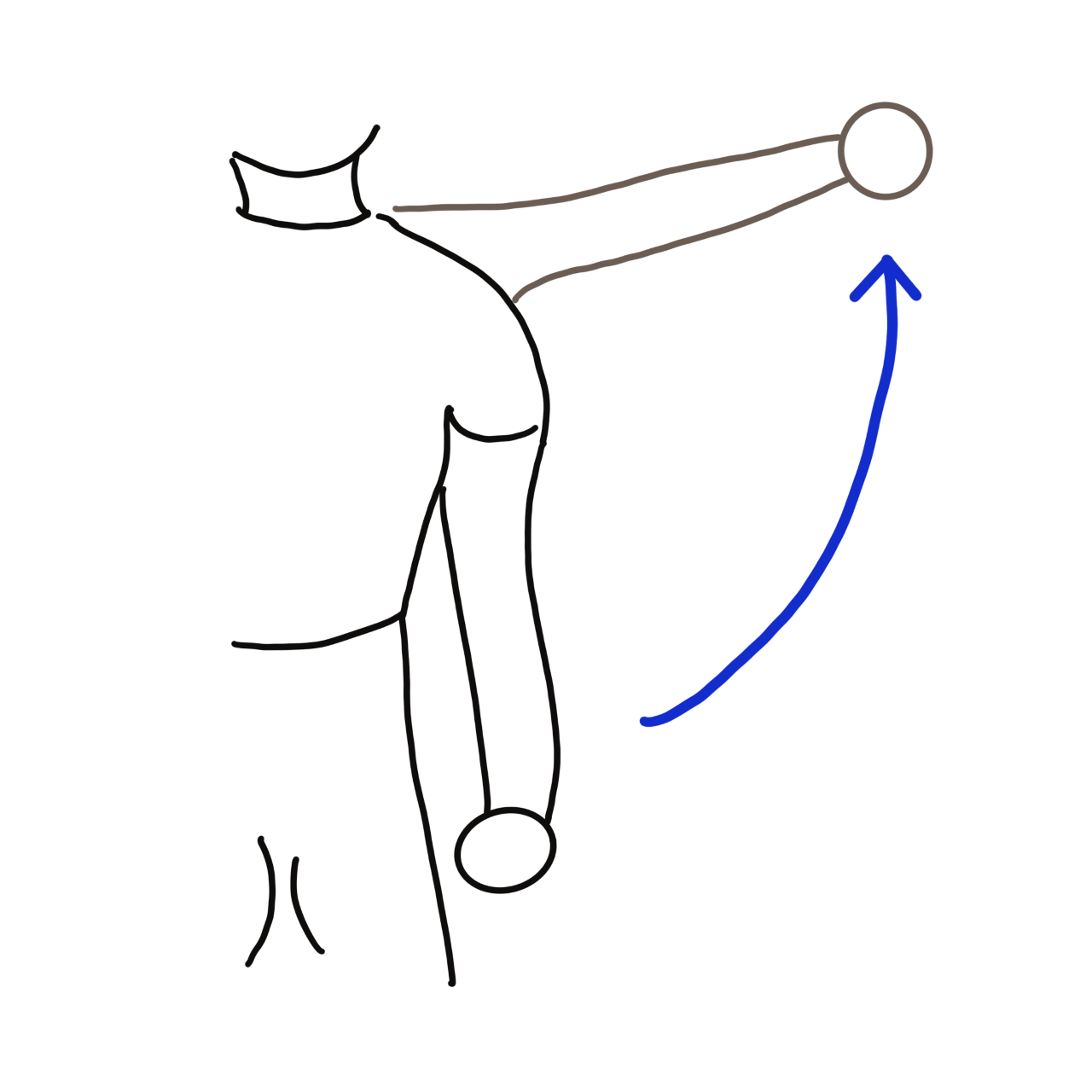 |
| Correct Front Raise | Correct Side Raise | Incorrect Side Raise |
The knee joint is composed of several muscles (see Figure 3) and can carry a tremendous amount of stress, especially when performing the squat or the lunge exercise. However, these exercises are two of the most effective lower body exercise. The squat mimics the movement of sitting down and getting up out of a chair, and the lunge helps to improve balance and stability. Both exercises incorporate many muscle groups in the lower body including the hips, thighs, buttocks, and calves. Proper form during the squat and lunge means the knee is lined up over the ankle. This helps to keep the bulk of body weight distributed through the heels. When form is incorrect and the knees are pushed forward toward toes, body weight, is placed in the front part of the knees.
Figure 3: Knee Joint and Muscles of the Knee Joint
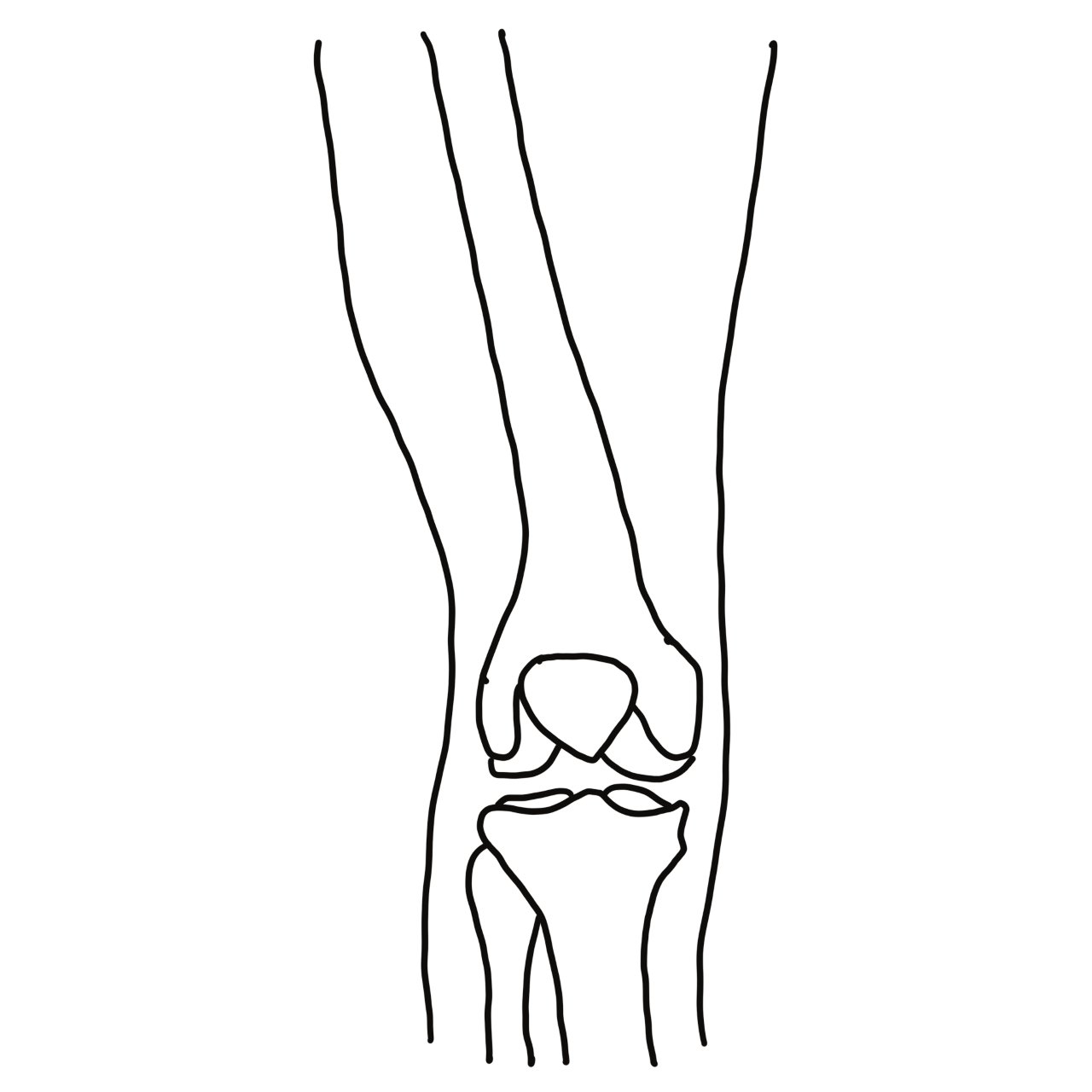 |
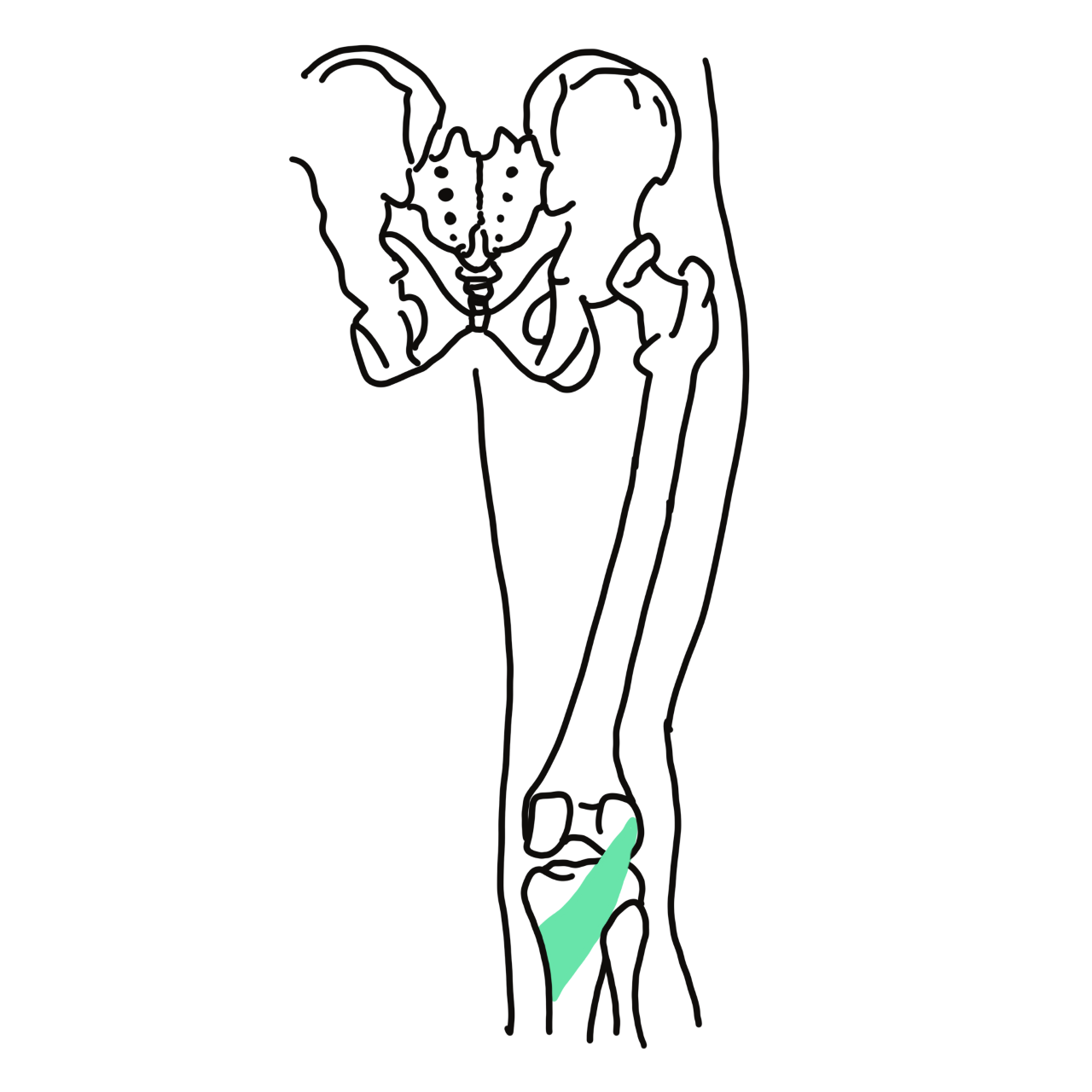 |
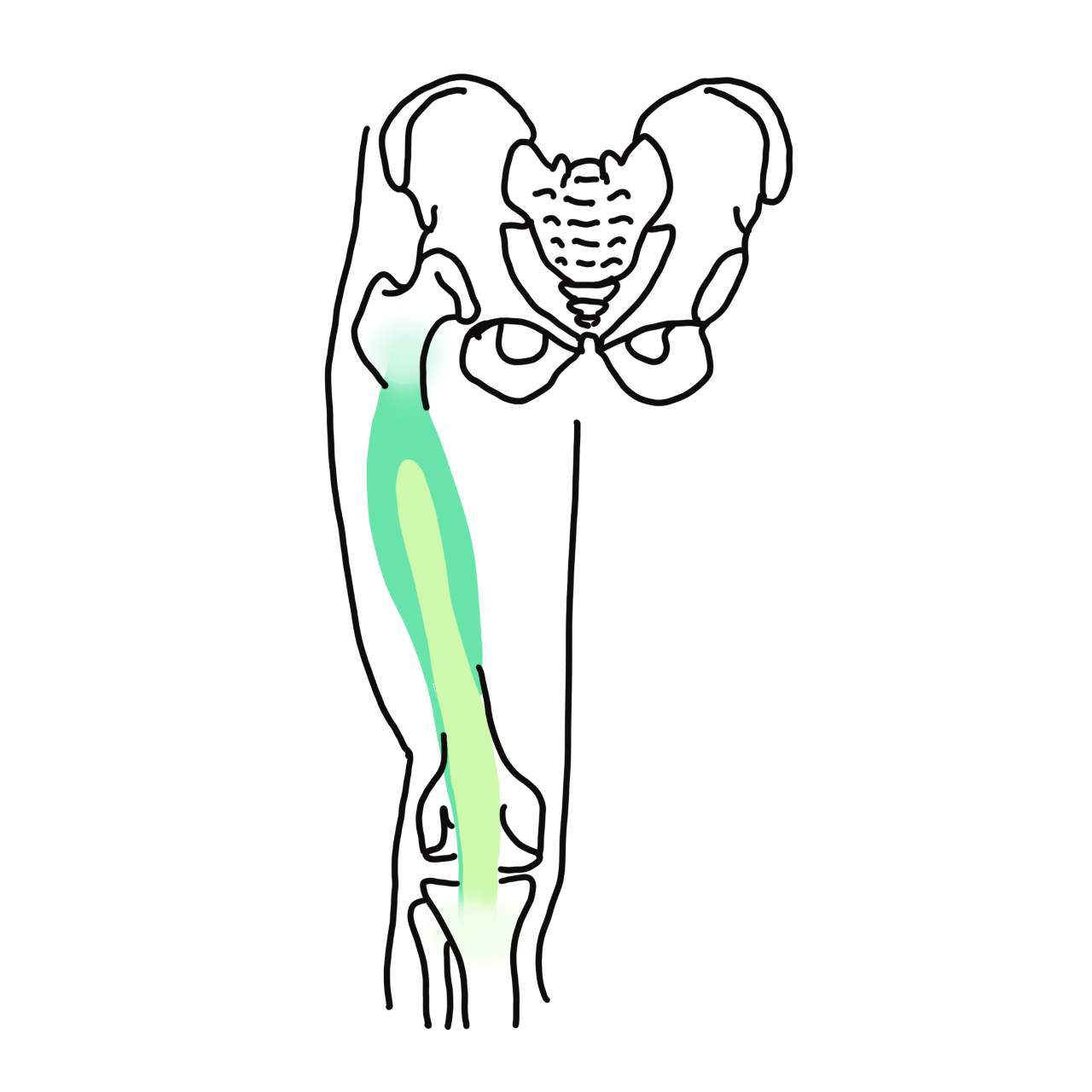 |
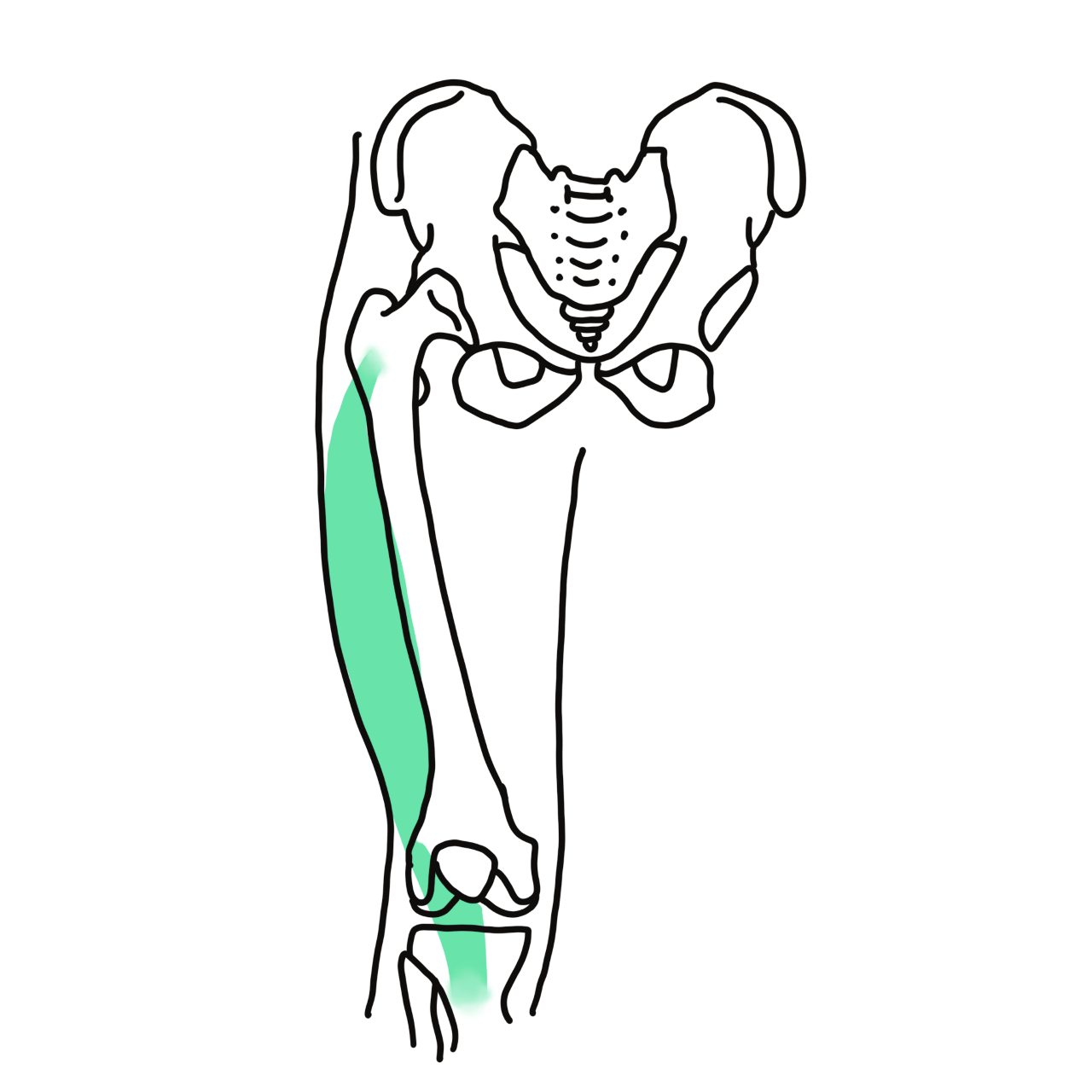 |
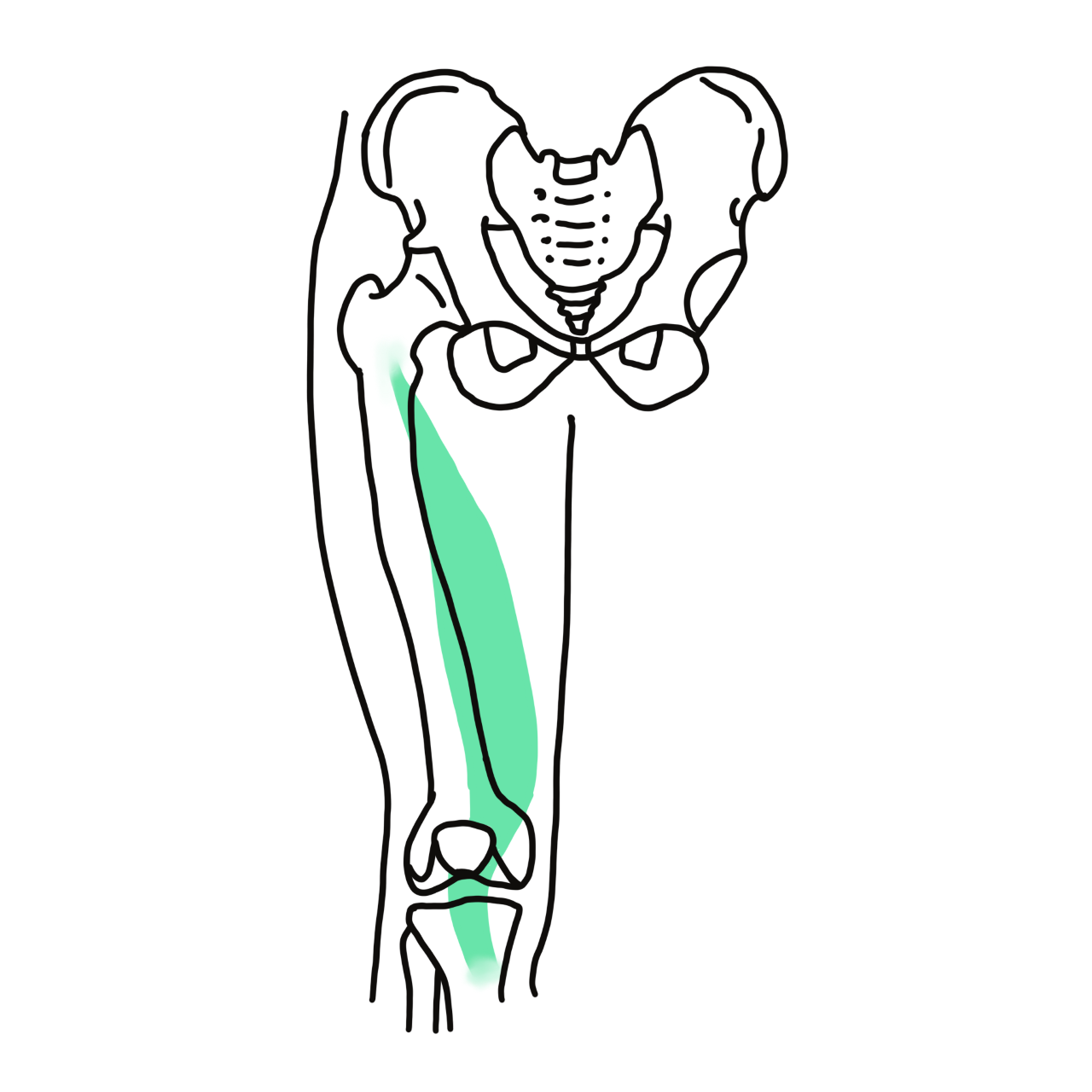 |
| Knee Joint | Popliteus | Vastus intermedius | Vastus lateralis | Vastus medialis |
To prevent excessive stress on the knee joint when doing the squat or lunge, make sure you:
- Avoid leaning forward; keep torso erect.
- Avoid pushing your knees forward. Keep knees aligned over ankles - not toes.
- Avoid locking knees when standing.
- Keep your knees pointed in the same direction as your foot.
For the squat exercise, shift your hips backward as though you are going to sit in a chair. This will help keep your weight distributed through your heels and prevent forward movement of the knee. For the lunge, take a large step forward and lower your torso straight down toward the floor until your knee is at a 90° angle. Push back through the heel of your front foot to return to standing (see Figure 4).
Figure 4: Correct and Incorrect Form for Squat and Lunge
| Squat | Lunge | ||
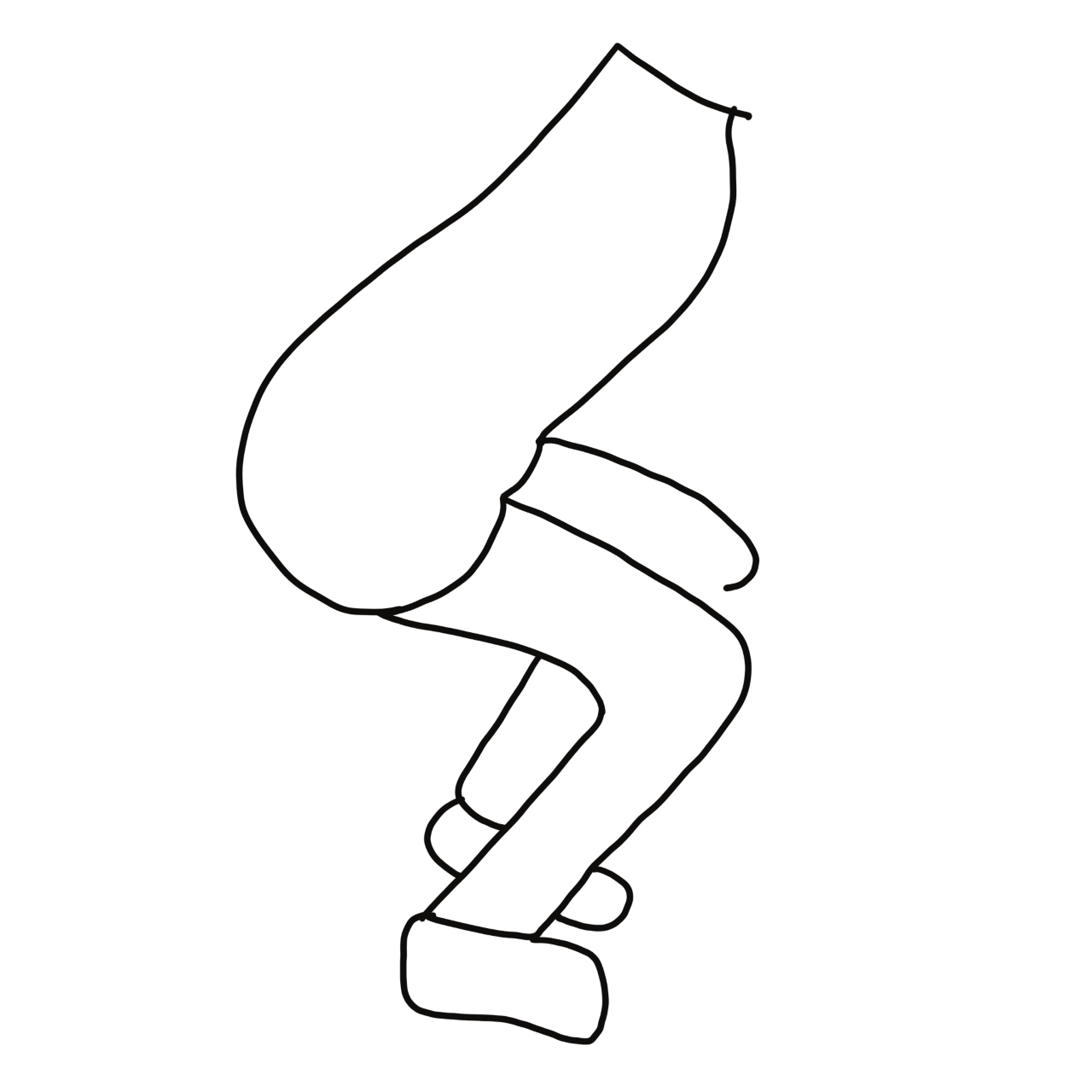 |
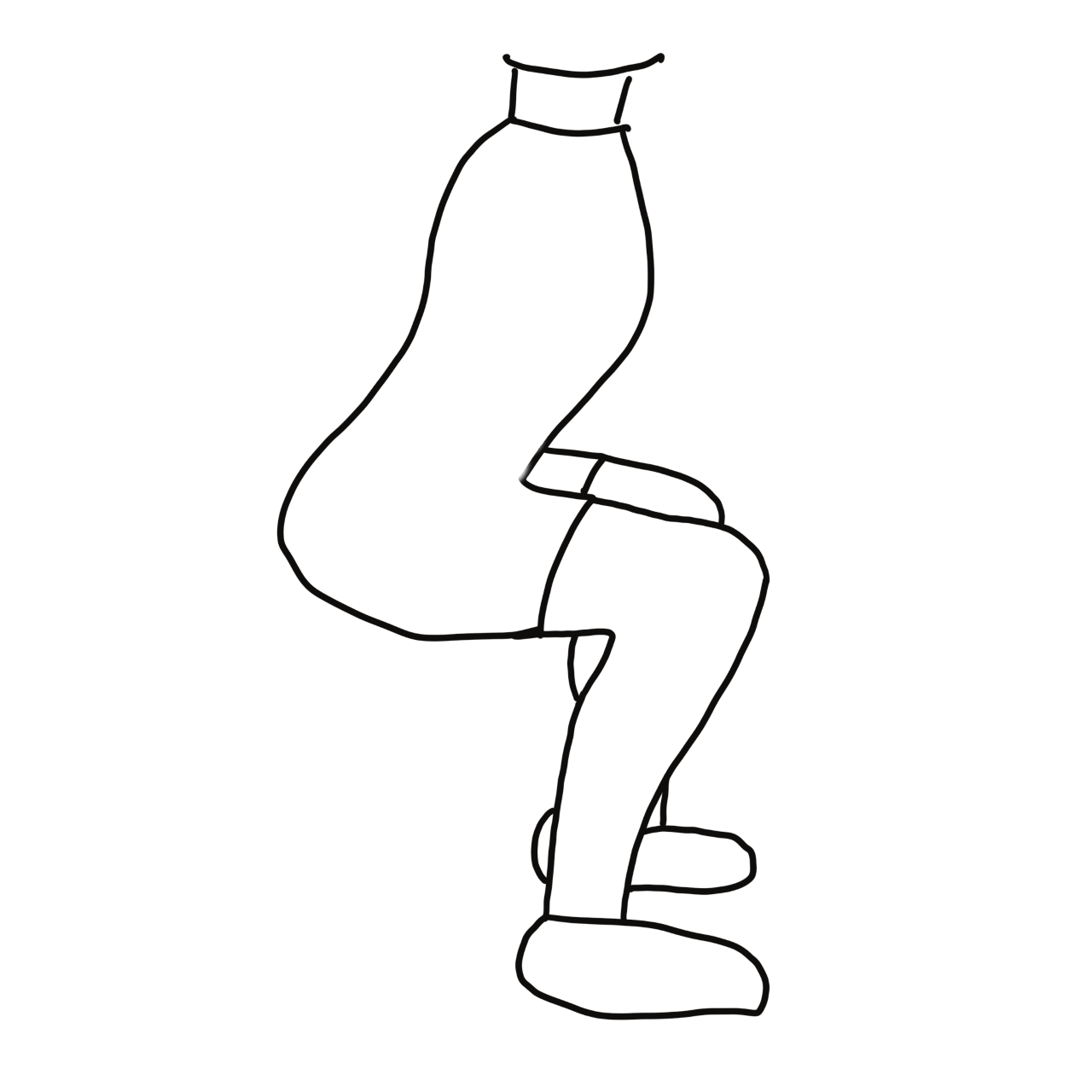 |
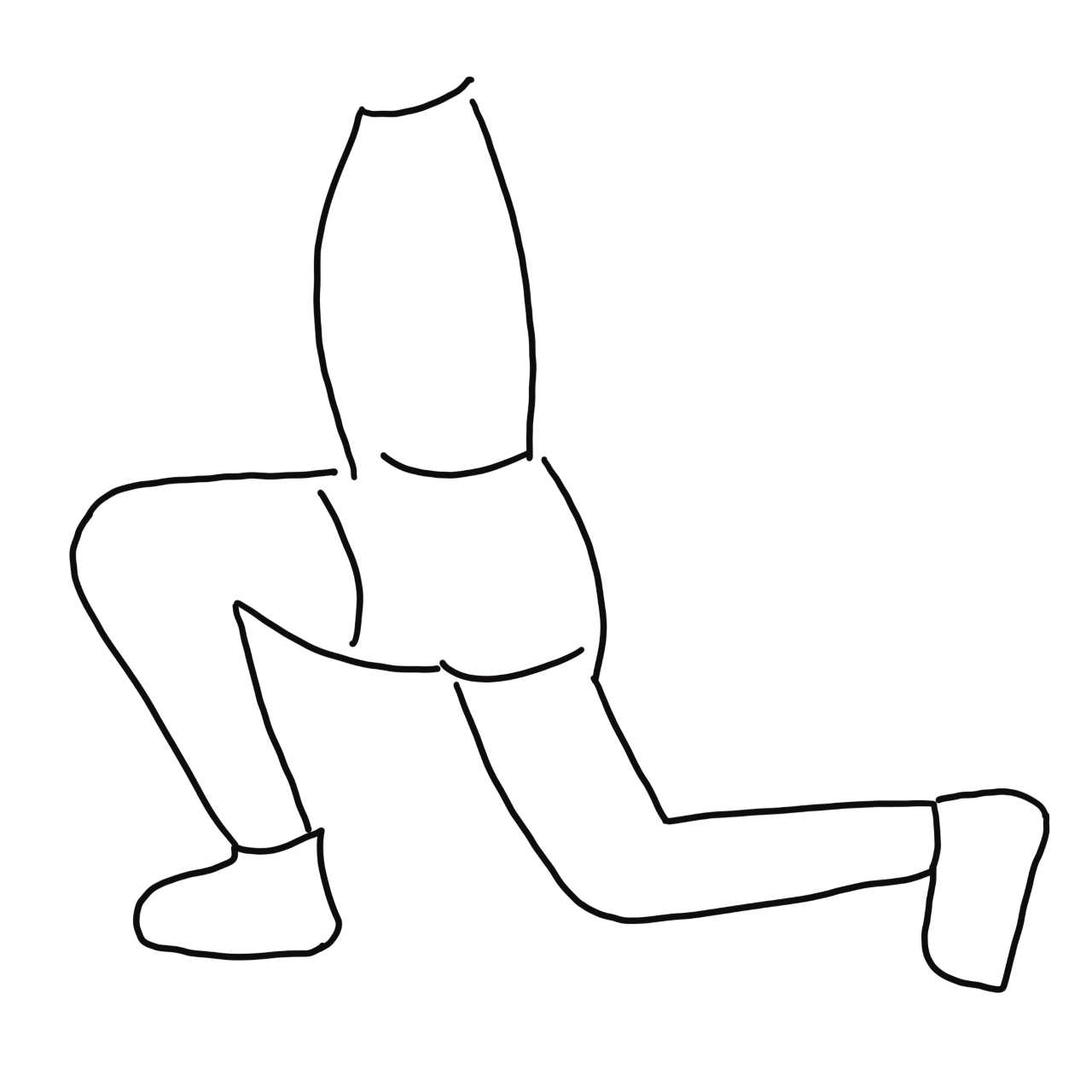 |
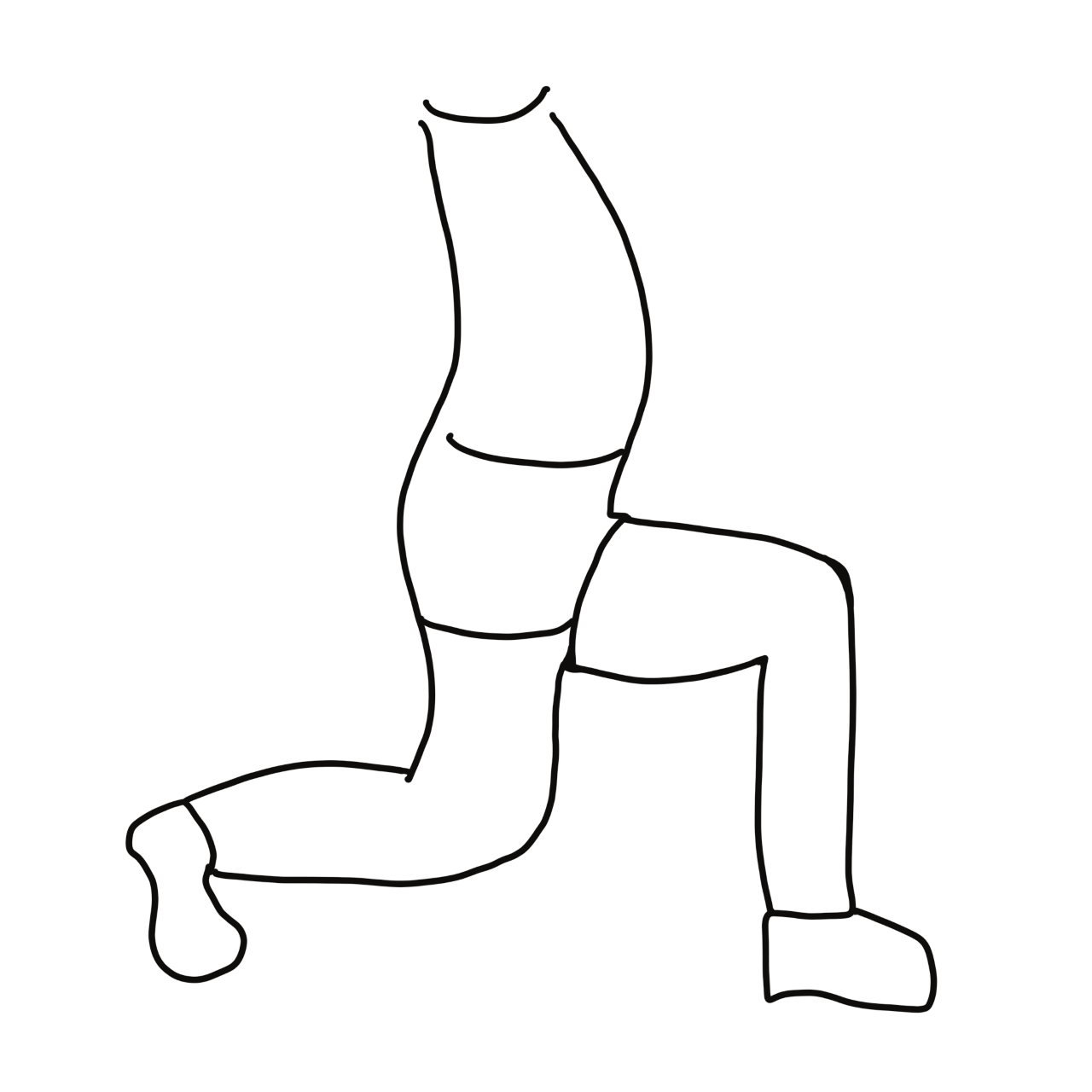 |
| Incorrect | Correct | Incorrect | Correct |
Muscles
Proper form and technique are also important when doing stretching, or flexibility, exercises. Stretching exercises can help to keep your body flexible by enabling more freedom of movement for regular physical activity and activities of daily living such as getting dressed, tying your shoes, and reaching for objects overhead. They can also help to prevent injuries, reduce muscle tightness and tension, promote relaxation, and help with coordination. Stretching can be done as a stand-alone workout or after other types of exercise, such as endurance and strength training, to help prevent muscle soreness and stiffness.
Be sure to practice proper stretching technique. When performed incorrectly, stretching
exercises can result in injury to the muscle, joint, and/or ligaments. Below are some
guidelines
for stretching safely.
- Always warm up before stretching. A warm up should increase blood flow through muscle tissue and increase overall body temperature.
- Slowly stretch into a position as far as possible without pain. Relax, breathe, and hold the stretch for 10 to 30 seconds. Repeat the stretch a second time. The first stretch "wakes up" the targeted area. The second time you should be able to reach into the stretch a little farther.
- Do not bounce or jerk into a stretch.
- Do not lock your joints. Always keep a slight bend in your elbows and knees while stretching.
- Remember to breathe normally.
When performed correctly, stretching exercises can help to:
- ease tension, stiffness, and pain
- improve range of motion
- improve posture
- reduce low back pain
Exercise Safety Pointers
Here are a few additional exercise pointers to help reduce your risk of injury:
- Refrain from excessive joint flexion (narrowing the angle of a joint), extension (widening the angle of a joint), or locking a joint. This can cause ligament and cartilage damage.
- Never exceed your comfortable range of motion.
- Do not excessively flex or extend the back. Maintain the natural curvature of your spine. This can be accomplished by tightening the core muscles.
- Breathe. Failing to breathe increases blood pressure, strains on the heart and arteries, and can cause dizziness, headaches, and even blackouts.
- Keep a steady pace. Performing at the right pace reduces your risk of injury by helping to ensure proper form and range of motion.
Caution
Any exercise movement that is selected for an exercise program should have a health benefit, i.e. improve flexibility, strength, endurance, and/or balance. However, not all exercises are appropriate for everyone, and some health concerns can increase risk for injury. Such exercises are considered to be "contraindicated." Contraindicated means an exercise movement is not recommended because it could be dangerous. Always check with your health care provider to make sure the exercise movements are appropriate, especially if you have any of the following health concerns:
- Cancer
- Diabetes
- Heart disease
- High blood pressure
- Hip replacement
- Knee pain/Replacement
- Low back pain/Sciatica
- Neck pain
- Pregnancy
- Shoulder pain